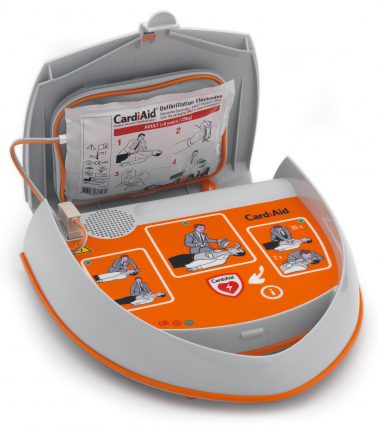UK Defibrillator Database
 In Britain, around 30,000 people per year are struck by sudden cardiac arrests outside hospital environments. This is particularly troubling, as when it comes to treating casualties of a sudden cardiac arrest, the length of time the brain is starved of oxygen has the biggest impact on recovery rates. If a defibrillator is used within 3-5 minutes of a cardiac arrest, the chances of survival jump from 6% to 74%. Even administering basic first aid will work to maintain an oxygen supply to the patient’s brain and other vital organs long enough for emergency services to intervene before the chances of survival diminish too much.
In Britain, around 30,000 people per year are struck by sudden cardiac arrests outside hospital environments. This is particularly troubling, as when it comes to treating casualties of a sudden cardiac arrest, the length of time the brain is starved of oxygen has the biggest impact on recovery rates. If a defibrillator is used within 3-5 minutes of a cardiac arrest, the chances of survival jump from 6% to 74%. Even administering basic first aid will work to maintain an oxygen supply to the patient’s brain and other vital organs long enough for emergency services to intervene before the chances of survival diminish too much.
How do defibrillators work?
Defibrillators are most commonly used for sudden cardiac arrest, which occurs when the electrical rhythm controlling the heart becomes erratic or irregular. The defibrillator delivers a powerful electric shock which restores normal heart function and the circulation of oxygenated blood around the body. If used correctly, defibrillators can buy vital time to allow emergency services to intervene.
Defibrillators comes in two types:
- a manual defibrillator – a much larger device usually found in hospitals
- an automated external defibrillator (AED), a much smaller and more compact unit
The AED detects and interprets a heartbeat and will deliver an electric shock only if an irregular heartbeat rhythm that requires defibrillation is found. As the production costs of AEDs have dropped, they have become commonplace in a range of public spaces.
Obligations of employers?
Currently, there are no specific legal provisions requiring employers to have a defibrillator available. It is, however, becoming increasingly common to see these devices present in offices and other working environments. Much of this is down to lobbying undertaken by bodies such as the Institution of Occupational Health and Safety, the British Heart Foundation and the Resuscitation Council UK. Providing access to and training in the use of a defibrillator now forms part of a comprehensive workplace first aid response plan. Tens of thousands of devices have now been installed across the UK.
The National Defibrillator Database
A lack of a comprehensive national database has limited the effectiveness of defibrillators, as emergency services personnel are often unaware of their precise location. A central database solves this by mapping a network of devices to refer to during emergency calls as well as their condition and maintenance records.
The creation of a database requires input from a variety of local and national stakeholders. To solve this, the British Heart Foundation has partnered with the NHS to map all the UK’s defibrillators, with the aim to have these devices available for all out of hospital cardiac arrests. The network will be initially trialled by West Midlands Ambulance Service and the Scottish Ambulance service before being rolled out nationally. When the network is fully launched in Spring 2019, defibrillator owners will be invited to register their device through the website.
Take a look at our dedicated guide ‘What is an AED?’ for everything you need to know about AEDs and more!
